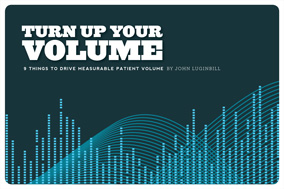Social Media is an essential tool to build long-term relationships with patients to increase patient volumes. Don’t think it is possible?
LaunchYourMovement.com showcases 6 case studies of hospitals using social media.
Concierge Services
1. Scripps uses Twitter to turn angry patients into loyal ones. Its basic approach of “try new things, be nice to people and don’t say anything that our legal department would object to” has yielded “little instances of gratitude that make what we’re doing worthwhile. Raging angry fires put out, people passing around our wellness stories, horrible reviews retracted and replaced with stories of great customer service.”
2. Norman Regional Health System spends 30 minutes a day on Twitter and Facebook. Through these tools, they’ve built a greater partnership with the press. They’ve had happy patients share their stories. And they’ve worked quickly with frustrated patients to get their issues resolved.
Live Event Coverage
3. Children’s Medical Center in Dallas tweeted about a kidney transplant from a father to his son. Twittering took place at both UT Southwestern Medical Center (where the kidney was removed from the father) and Children’s. According to data from Children’s (reported by Greystone), the results of this single event were as follows: “By the end of the day, Children’s Twitter followers had increased 370%, 40 interviews were scheduled over the following 9 days and more than 600 stories were garnered with more than 60 million impressions. In addition, 20 people contacted Children’s transplant program to request information about becoming an organ donor.”
4. At least 7 hospitals have used Twitter during live surgery. Their stories are embedded in these links. Common goals are both buzz building and patient education:
- St. Luke’s in Cedar Rapids (hysterectomy and uterine prolapse surgery). One hospital spokesman said, “A lot of people would like to go into the operating room and see what happens but don’t want all the visuals and stuff.”
- UNC Hospitals (heart procedure)
- Henry Ford (removal of a cancerous kidney mass). From the article: “Dr Craig Rogers, the lead surgeon in the Henry Ford surgery, said the impetus for his Twittering was to let people know that a tumor can be removed without taking the entire kidney.”
- Sherman Hospital (robot-assisted laparoscopic hysterectomy). During this surgery, 72 followers asked questions on Twitter, mostly related to the da Vinci® Surgical System.
- OSF St Joseph (brain surgery)
- Sinai Hospital in Baltimore (sleeve gastrectomy)
- Methodist University Hospital in Memphis (brain surgery). This one led to 21,000 YouTube views and 3 requests for appointments.
5. South Coast Health System uses Twitter for real-time crisis communication. After a big chemical spill in the neighborhood, 50 people were taken to local hospitals for treatment. Twitter was the perfect tool to stream live and breaking information about status, media reports and number of patients admitted and released.
6. St Jude’s Children’s Research Hospital lets donors and patients tell their story for them. Its Facebook group now has 100,000+ fans.



